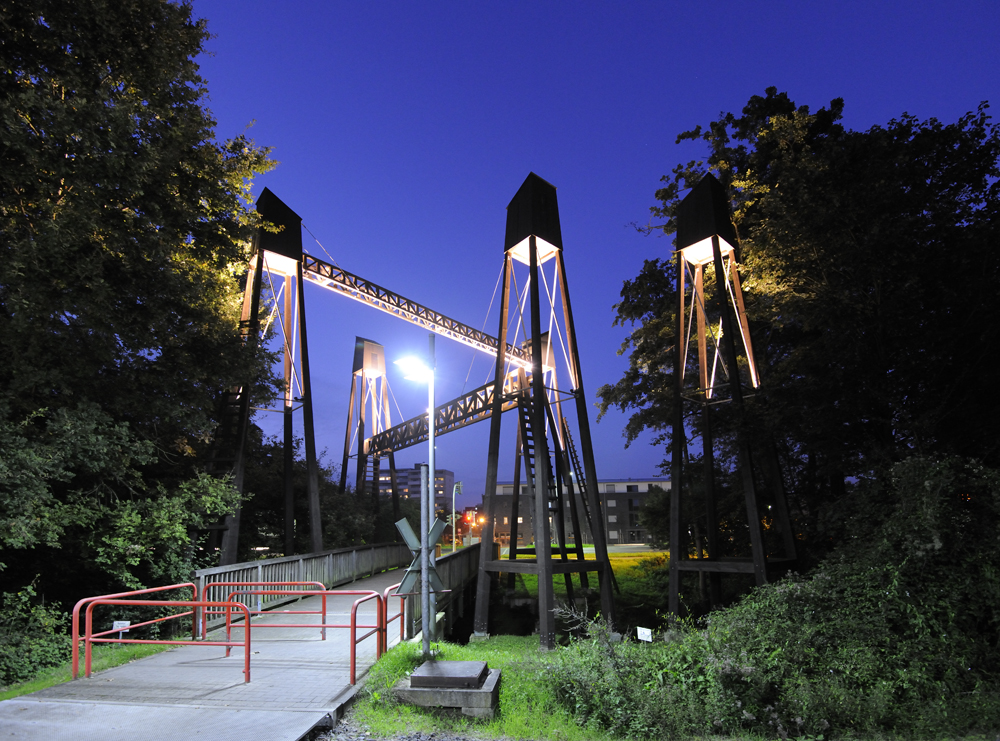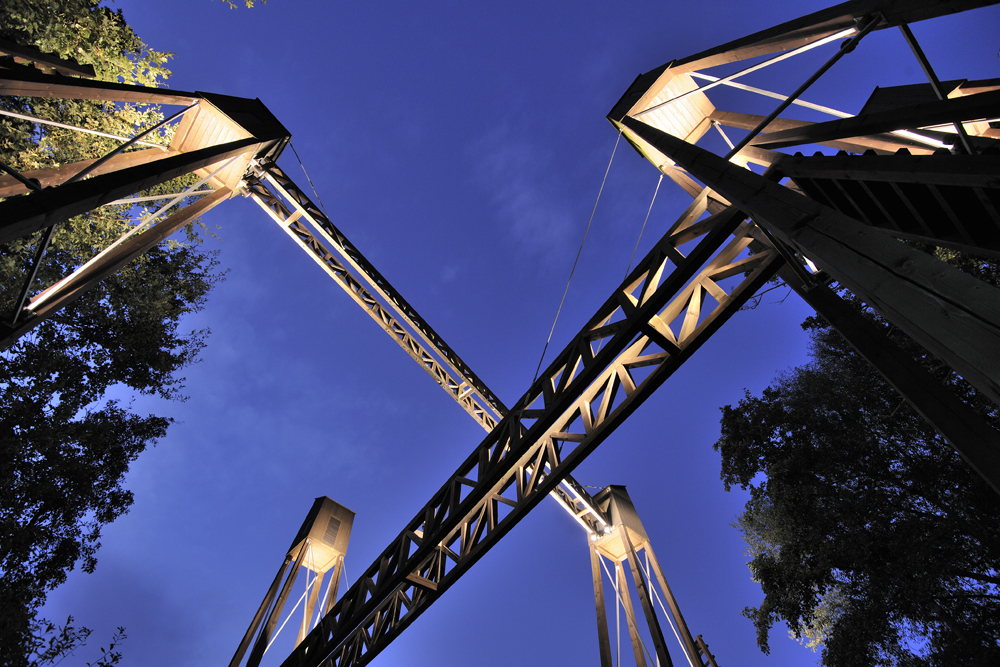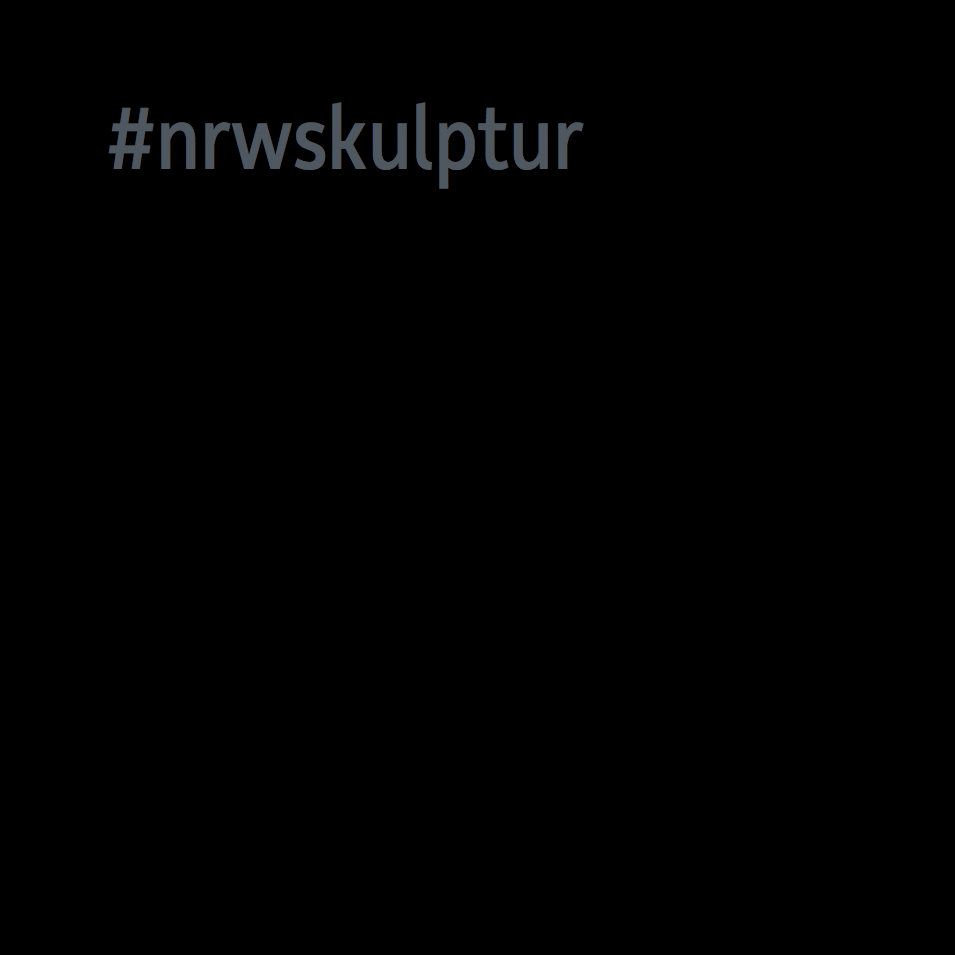Brücken über den Nordkanal / Bridges over the Nordkanal








The historically significant Nordkanal is bridged by a large, 14-meter high, multi-part sculpture. The structure consists of five wooden house-like elements that are elevated by tall stilts. With their upward tapering walls, pent roofs, and narrow window and door openings, the houses are reminiscent of traditional perches or watch towers. As lookout points, they maintain a visual relationship to the ground, despite being raised up above it. These surreal wooden structures are connected through a diverse system of metal struts and bridges. The ladders leaning against them may make it seem as if they can be accessed, but it is impossible: the lowest rungs are too high to reach and they don’t go all the way up to the houses. The only accessible connection between the two banks is a previously existing bridge. It is also made out of wood, but was constructed lower and independently of the artwork.
The focus of Kaarst sculptor Wilhelm Schiefer’s work is the historic Nordkanal, which was built by Napoleon between 1808 and 1810 to connect the Rhine and the Meuse. The location is also closely tied with local history: it marks the former border between the districts of Kaarst and Büttgen, which continues to exist in the minds of the residents, even though the two communities were merged years ago. In addition, several transport routes run parallel here, including railroad tracks, the waterway, the pedestrian path, and the road. The footbridge across the canal clearly emphasizes the sense of connectivity here, and provides necessary access to the newly established Regiobahn (railway) stop. This bridge creates a crossing and overcomes the distance created by the canal, even if only at a specific point.
This act of connection reinforces the artwork as a communication hub: “The five house-objects make specific reference to the five districts of Kaarst (Kaarst, Büttgen, Holzbüttgen, Driesch, Vorst) and their sometimes troubled relationships to each other. The difficulties of mutual communication and the absurdity of the situation become particularly clear through the bold ascent into airspace … The work mainly addresses the people who walk past on their way to the train station and happen to stop in front of the towers somewhat cluelessly, looking to find a means of access that doesn’t exist. They are the actual protagonists of this production. Mediation and exchange are either indirect or impossible in these castles in the sky; still, passersby all remain on the ground below – a common ground that leaves all possibilities for action and communication open.” (Hannelore Kersting)
Reference: http://kunstverein-nordkanal.de/bruecken-ueber-den-nordkanal/
Wilhelm Schiefer
← Zur Startseite
Kaarst, Nordkanal, at the Kaarster See recreational area
